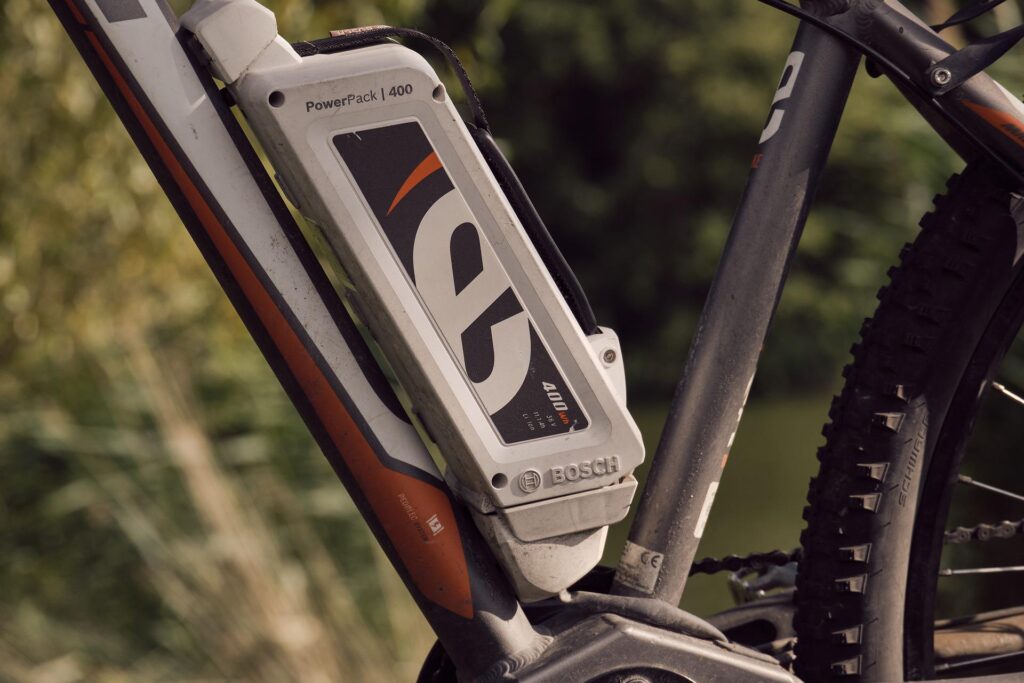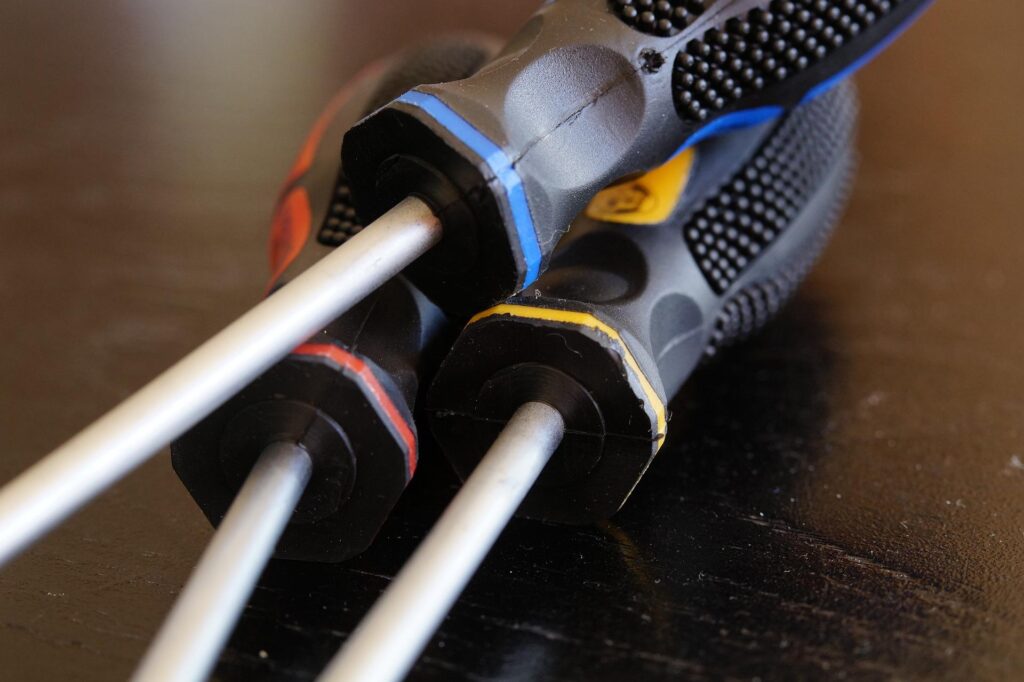Electric Bikes make city commuting or riding a bike for pleasure easier, faster and more accessible to riders of different abilities, thanks to strong electric motors that can either assist a rider with pedaling the bike or power the bike independently of the pedals via a throttle.
To do this, energy is stored within an electric bike’s onboard battery and is used to power electric motors which propel the bike forwards, converting the chemical energy stored in the battery into electrical energy to be used by the motor, which outputs kinetic energy, driving your wheels.
So what happens if you want, or need, to ride an electric bike without its battery?
Can You Pedal an Electric Bike Without a Battery?
Well the short answer is: Yes! But not with every electric bike.
Which Electric Bikes can be Used Without a Battery?
Electric Bikes fall into two main categories, with lots of variations in-between. Some can be used without a battery, and some can’t. Let’s examine each case.
Pedal-assist (or pedelec) e-bikes have onboard sensors which automatically sense when a rider is pedaling, signaling the battery to start supplying power to the motor. In most pedal-assist e-bikes, especially mid and high end models, torque sensors are used so that the e-bike knows when you are pedaling and how hard you are pedaling. The harder you need to pedal, the more power it supplies to the motor to assist you. The other type of sensor is called a cadence sensor, and is often found on lower end models. This sensor can tell when you are pedaling and how often – but not how hard. Cadence sensors are cheaper but many riders find them less smooth to use than torque sensors.
Because pedal-assist e-bikes use physical pedals to tell the motor when to assist the rider, they can also be used without a battery, just by pedaling normally!
Throttle control (or power-on-demand) e-bikes use a manual throttle to control the amount of power being delivered to the motor. This can either be a lever operated by the rider’s thumb or a twist throttle, much like a motorcycle. As soon as the rider uses the throttle, the battery sends power to the motor and the e-bike accelerates. E-bikes that are controlled solely by a throttle do not come with pedals and are operated much like a moped or motorcycle. As such they usually follow the same road laws as mopeds and small motorcycles. Because these kinds of e-bikes do not have any pedals, they cannot be used without a battery. They rely entirely on the battery to supply power to the motor and have no other way to be used.
However, some e-bikes designed to primarily use the throttle also have an optional pedal assist. These are usually more powerful than normal pedal-assist e-bikes, which can be pedaled to extend range and reduce battery usage. Because these e-bikes have pedals, they can be used without a battery.
The opposite is also true: some pedal-assist e-bikes also have an optional throttle. The rider can choose to use extra power via the throttle whenever they want, even whilst the motor is automatically assisting the rider’s pedaling. If the rider wants to take a quick break from pedaling, or needs a bit more power, they can use the throttle to further assist their riding. These can be also be pedaled without a battery.

Why Pedal an Electric Bike Without a Battery?
There could be many reasons to pedal an e-bike without a battery.
Running Out of Power
One of the main reasons you might need to pedal an electric bike without a battery is because the battery has gone flat. If the battery runs too low on charge, it will no longer power the motor of your electric bike. If you find yourself out of juice, you can still use the e-bike’s pedals to get to where you need to go.
Damage
Much like the above example, the battery may no longer be powering the motor of the e-bike. If you know the battery is charged, but the e-bike still isn’t receiving any power from the battery, there could be a problem with the battery, the motor or some other part of the e-bike. But so long as the pedals still work, you will be able to pedal the e-bike without needing the battery. Remember, e-bikes don’t last forever.
To Save Battery Charge
Sometimes you might need to use your e-bike for a long distance without charging it. Pedaling the e-bike without using power from the battery allows you to save charge for when you really need it, such as on a long or steep hill, or once you start to get tired.

For Exercise
It is also possible to use an e-bike without a battery to get more of a workout from riding. The resistance created by some e-bike motors can make cycling without a battery even more challenging than a standard bike! This is great exercise for the leg muscles and for cardio.
On a Flight
Many airlines do not allow large batteries to be taken on board a plane for safety reasons. In this situation, a rider can still take their e-bike onboard a flight without a battery and buy or rent batteries at their destination.
Legal Reasons
Many countries or states have different laws for the use of e-bikes. Most countries class low-powered pedal assist bikes as normal bicycles in the eyes of the law (except in Hong Kong, for example, where all e-bikes are banned). More powerful e-bikes that use a throttle or speed pedal-assist to go above speed restrictions of low-power pedal-assist e-bikes sometimes require extra licenses, tax or insurance. However, if an e-bike can still be pedaled you may still be able to use it legally as a normal bicycle so long as the battery is removed. But the laws are different everywhere and you must always check the laws and regulations of any country or state you are planning to use an e-bike in. For example, in the UK simply “riding” an e-bike above the power limit of electrically assisted pedal cycles (EAPCs) is against the law and this could be interpreted as pedaling without a battery too.
Weight Limits
Sometimes you may need to access a weight-restricted area, such as an accessible bike trail via a chairlift. An e-bike with a heavy battery might exceed the weight limit of the chairlift so the battery could be removed to ensure safer use. Other weight limits might include: elevators inside buildings or weight limits for public transport.
Practice
The weight and center of gravity of an e-bike can be very different to a normal bicycle. As such, removing the battery saves some weight and allows a rider to get used to the e-bike before they try it with the battery. Pedal-assist and throttle controls also take some getting used to, so becoming familiar with the weight and center of gravity of an e-bike by pedaling it unpowered could be helpful for new riders.
How to Remove an Electric Bike Battery
There are a few ways to remove an e-bike battery.
Disconnect or Remove the Battery
Some e-bikes, such as the Raleigh Array, the Pinnacle LD13 or e-bikes by Brompton, feature removable batteries that can be carried into your home and charged without having to plug the whole bike in. By fully removing the battery, the rider is still able to pedal the e-bike manually if required.
Some of these models have batteries that can be disconnected via cables, meaning the battery can be disconnected whilst remaining attached to the bike, whilst others clip into the frame and must be removed entirely to be disconnected.

Power Down
Many e-bikes have a means to switch off the power supply from the battery, meaning riders can control whether or not the motor receives power from the battery at the flick of a switch or the push of a button. By turning off the power supply an e-bike can be pedalled like a normal bicycle.
Disconnect the Battery’s Wiring
For advanced users, or those with knowledge of electrical systems, it may be possible to disconnect the wiring from the battery in models where the battery cannot normally be removed. By disconnecting the battery from the rest of the electrical system, you will no longer be able to use the battery to power the motor. This should only be done by those with sufficient knowledge and experience of working with electrical systems.
Is It Harder To Pedal an Electric Bike Without a Battery?
Electric bikes generally tend to weigh a lot more than normal bicycles of an equivalent size. The average weight of an e-bike is approximately 23kg/50lbs whereas a normal bicycle weighs closer to 8kg/18lbs. This is a weight increase of over 275%, which will undoubtedly make an e-bike harder to pedal. Most batteries weigh in the region of 3.5kg/8lbs so removing the battery saves some weight, but not a lot. Pedaling an electric bike without motor assistance will definitely feel heavier, however this depends a lot on the type of terrain you’re cycling over and your individual level of fitness.
As mentioned previously, motor resistance also plays a factor. Some motors, such as crank drive motors, provide greater resistance when unpowered which will make pedaling feel much heavier. In some models, this may also affect freewheeling. Other types of motors such as hub drive barely create any resistance at all and if you are fit and active you may not notice much of a difference.
How Will Removing the Battery Affect an Electric Bike?
Apart from taking a little more effort to pedal, and making it lighter, removing an e-bike battery will not affect the performance of an e-bike in any way. However, there are some other considerations to make, which we will look at below.
Is it Safe to Pedal an Electric Bike Without A Battery?
For the rider, pedaling an e-bike without a battery is quite safe. However, the rider should keep in mind that, as pedaling will be more difficult without motor assistance, they may tire more quickly and should make considerations about how long their journey will take and how far they need to travel. As the e-bike is also quite heavy, its balance and center of gravity will be different to a normal bicycle, so any maneuvers will need to be made with this in mind. It is a good idea to practice pedaling without a battery if possible, before doing it in a built up area! Additionally, as the top speed of the e-bike is reduced without a motor to assist pedaling, in some ways it will be safer for the rider; if an accident were to happen, it would be at a slower speed.
For the e-bike itself, pedaling without a battery will not affect it in any way, other than a minor weight reduction. However, running the battery low does reduce the lifetime of the battery, so it is good practice to disconnect the battery when it gets low or runs out. That said, many control systems on e-bikes have safety features to protect batteries from the effects of discharging too much/getting too low on power. Pedaling without a battery at all is quite safe for the e-bike.
Other Ebike Safety Tips:
- Do not ride the bike if the battery is pierced
- Stay away from salt water, such as the sea,
- An ebike is heavier so brake earlier
- Adhere to local ebike laws
- Remember, heavier bikes mean more tire wear: watch out for those punctures
Tips for Riding an Electric Bike Without a Battery
Keeping the battery connections in the holder clean, dry and clear of debris helps to extend the life of the battery and associated components. If you are riding without a battery, always check the battery connections for dirt and dust once you’ve finished riding, and before reseating the battery in its holder.
Practice first! It is better to practice riding without a battery before you need to than to find yourself suddenly without power, with a heavy bike you’ve never pedaled unassisted before.
Plan your journey. It will likely take longer to ride to your destination without a battery to power your e-bike. Hills and difficult terrain may also feel more challenging than usual. Make sure to plan ahead so that you are not caught out by these extra considerations.
Keep your battery safe. If you have removed your battery, be sure to keep it in a cool, dry place. Batteries can be dangerous if exposed to heat and wet conditions can damage batteries beyond repair.
Conclusions
As you can see, it is quite possible to pedal an electric bike without a battery – so long as you have a model with pedals, of course!
It will be more difficult to ride due to the added weight and motor resistance, which can be a benefit if you’re looking for more exercise, or a hindrance if you have a long way to travel. If you intend to ride without a battery on a long term or frequent basis, you might find it helpful to find a lightweight model of e-bike, with an easily detachable battery.

